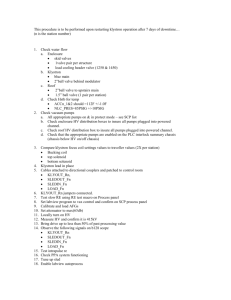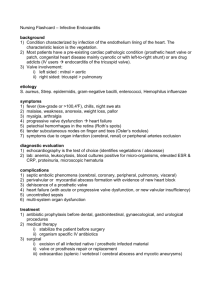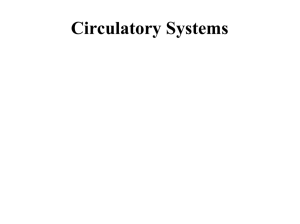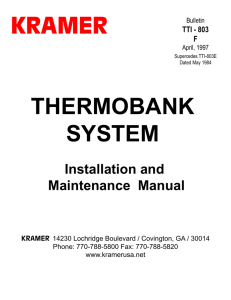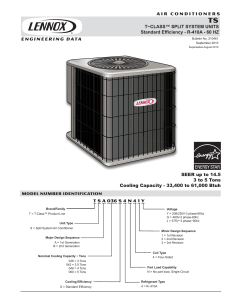OIL SAFETY TRIP OUT TROUBLESHOOTING GUIDE
advertisement
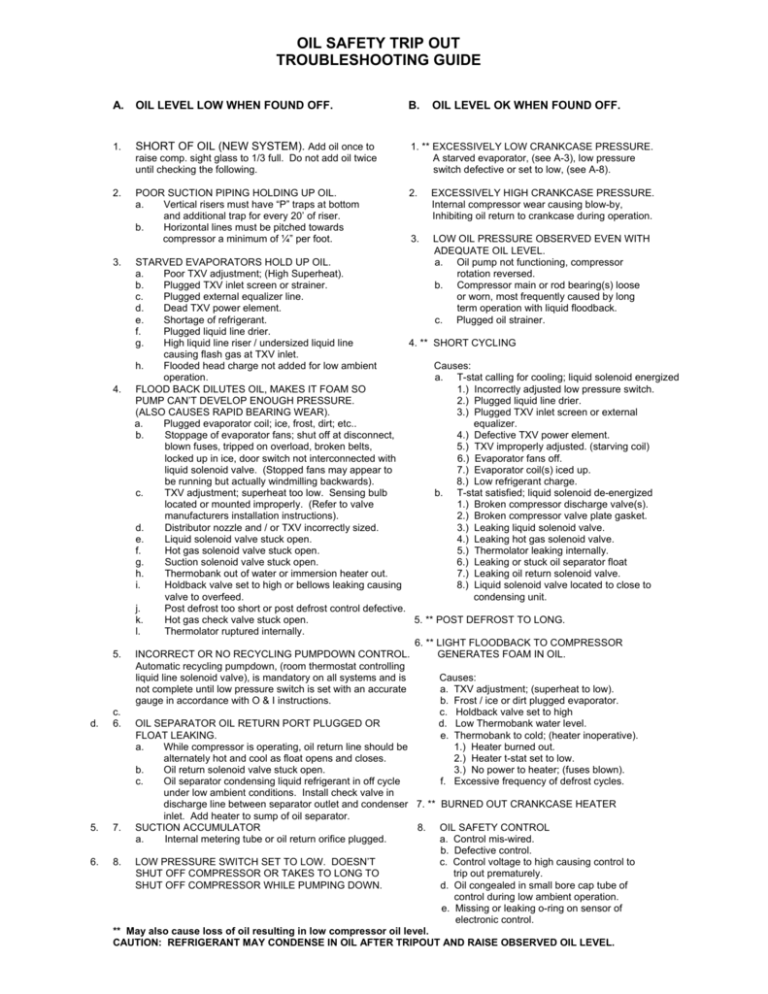
OIL SAFETY TRIP OUT TROUBLESHOOTING GUIDE A. OIL LEVEL LOW WHEN FOUND OFF. B. 1. SHORT OF OIL (NEW SYSTEM). Add oil once to raise comp. sight glass to 1/3 full. Do not add oil twice until checking the following. 1. ** EXCESSIVELY LOW CRANKCASE PRESSURE. A starved evaporator, (see A-3), low pressure switch defective or set to low, (see A-8). 2. POOR SUCTION PIPING HOLDING UP OIL. a. Vertical risers must have “P” traps at bottom and additional trap for every 20’ of riser. b. Horizontal lines must be pitched towards compressor a minimum of ¼” per foot. 2. EXCESSIVELY HIGH CRANKCASE PRESSURE. Internal compressor wear causing blow-by, Inhibiting oil return to crankcase during operation. 3. LOW OIL PRESSURE OBSERVED EVEN WITH ADEQUATE OIL LEVEL. a. Oil pump not functioning, compressor rotation reversed. b. Compressor main or rod bearing(s) loose or worn, most frequently caused by long term operation with liquid floodback. c. Plugged oil strainer. 3. d. 5. 6. OIL LEVEL OK WHEN FOUND OFF. STARVED EVAPORATORS HOLD UP OIL. a. Poor TXV adjustment; (High Superheat). b. Plugged TXV inlet screen or strainer. c. Plugged external equalizer line. d. Dead TXV power element. e. Shortage of refrigerant. f. Plugged liquid line drier. g. High liquid line riser / undersized liquid line 4. ** SHORT CYCLING causing flash gas at TXV inlet. h. Flooded head charge not added for low ambient Causes: operation. a. T-stat calling for cooling; liquid solenoid energized 4. FLOOD BACK DILUTES OIL, MAKES IT FOAM SO 1.) Incorrectly adjusted low pressure switch. PUMP CAN’T DEVELOP ENOUGH PRESSURE. 2.) Plugged liquid line drier. (ALSO CAUSES RAPID BEARING WEAR). 3.) Plugged TXV inlet screen or external a. Plugged evaporator coil; ice, frost, dirt; etc.. equalizer. b. Stoppage of evaporator fans; shut off at disconnect, 4.) Defective TXV power element. blown fuses, tripped on overload, broken belts, 5.) TXV improperly adjusted. (starving coil) locked up in ice, door switch not interconnected with 6.) Evaporator fans off. liquid solenoid valve. (Stopped fans may appear to 7.) Evaporator coil(s) iced up. be running but actually windmilling backwards). 8.) Low refrigerant charge. c. TXV adjustment; superheat too low. Sensing bulb b. T-stat satisfied; liquid solenoid de-energized located or mounted improperly. (Refer to valve 1.) Broken compressor discharge valve(s). manufacturers installation instructions). 2.) Broken compressor valve plate gasket. d. Distributor nozzle and / or TXV incorrectly sized. 3.) Leaking liquid solenoid valve. e. Liquid solenoid valve stuck open. 4.) Leaking hot gas solenoid valve. f. Hot gas solenoid valve stuck open. 5.) Thermolator leaking internally. g. Suction solenoid valve stuck open. 6.) Leaking or stuck oil separator float h. Thermobank out of water or immersion heater out. 7.) Leaking oil return solenoid valve. i. Holdback valve set to high or bellows leaking causing 8.) Liquid solenoid valve located to close to valve to overfeed. condensing unit. j. Post defrost too short or post defrost control defective. k. Hot gas check valve stuck open. 5. ** POST DEFROST TO LONG. l. Thermolator ruptured internally. 6. ** LIGHT FLOODBACK TO COMPRESSOR 5. INCORRECT OR NO RECYCLING PUMPDOWN CONTROL. GENERATES FOAM IN OIL. Automatic recycling pumpdown, (room thermostat controlling liquid line solenoid valve), is mandatory on all systems and is Causes: not complete until low pressure switch is set with an accurate a. TXV adjustment; (superheat to low). gauge in accordance with O & I instructions. b. Frost / ice or dirt plugged evaporator. c. c. Holdback valve set to high 6. OIL SEPARATOR OIL RETURN PORT PLUGGED OR d. Low Thermobank water level. FLOAT LEAKING. e. Thermobank to cold; (heater inoperative). a. While compressor is operating, oil return line should be 1.) Heater burned out. alternately hot and cool as float opens and closes. 2.) Heater t-stat set to low. b. Oil return solenoid valve stuck open. 3.) No power to heater; (fuses blown). c. Oil separator condensing liquid refrigerant in off cycle f. Excessive frequency of defrost cycles. under low ambient conditions. Install check valve in discharge line between separator outlet and condenser 7. ** BURNED OUT CRANKCASE HEATER inlet. Add heater to sump of oil separator. 7. SUCTION ACCUMULATOR 8. OIL SAFETY CONTROL a. Internal metering tube or oil return orifice plugged. a. Control mis-wired. b. Defective control. 8. LOW PRESSURE SWITCH SET TO LOW. DOESN’T c. Control voltage to high causing control to SHUT OFF COMPRESSOR OR TAKES TO LONG TO trip out prematurely. SHUT OFF COMPRESSOR WHILE PUMPING DOWN. d. Oil congealed in small bore cap tube of control during low ambient operation. e. Missing or leaking o-ring on sensor of electronic control. ** May also cause loss of oil resulting in low compressor oil level. CAUTION: REFRIGERANT MAY CONDENSE IN OIL AFTER TRIPOUT AND RAISE OBSERVED OIL LEVEL.
